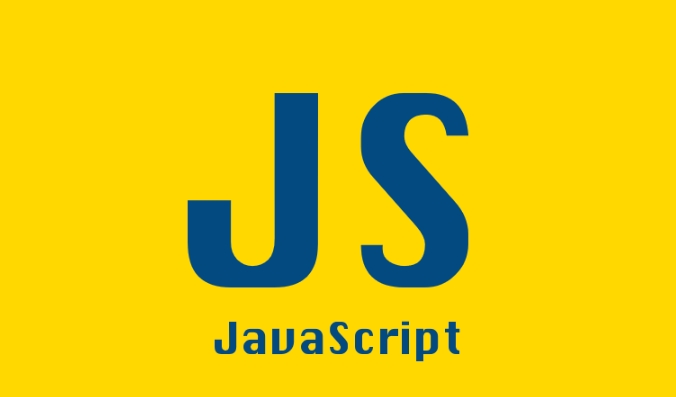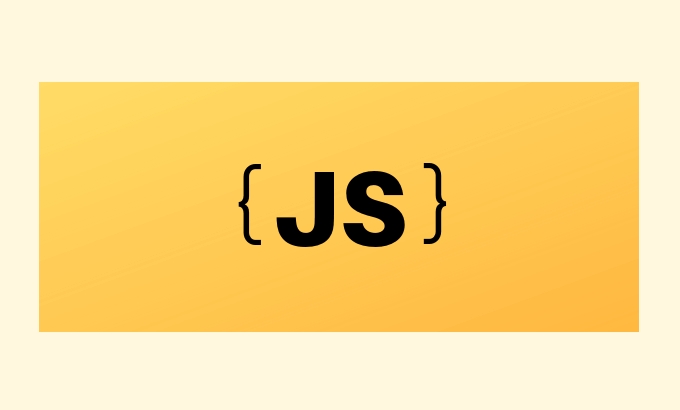JavaScript requires type checking to cause errors due to dynamic types, and TypeScript and Flow can detect problems in advance. 1.TypeScript is a JS superset, with a large community, a perfect ecosystem, strong compatibility, suitable for new projects or teams to support technology stacks; 2. Flow is lightweight and has little invasiveness, suitable for gradual migration of old projects, but has low community activity. Selection basis: Use TypeScript for new projects, and use Flow for old projects. At the same time, consider framework support such as Angular to adapt to TS is better.

If you often encounter variable types when writing JavaScript code, errors in passing parameters, or undefined problems when running the time, you need a more reliable way to manage the types. Flow and TypeScript are both mainstream JavaScript type checking tools nowadays, and they can help you find problems in advance. However, which one to choose and how to use it depends on your project needs and team habits.

Why JavaScript requires type checking
JavaScript is dynamic type, although flexible, but it is easy to bury. For example, if you write a function and you originally expected to receive a string, but if someone passes a number in, the program may crash. This kind of error is particularly prone to development of large applications.
Type checking tools (such as Flow and TypeScript) help you check "whether the parameters meet expectations" when you write code, and report errors in advance instead of waiting until runtime to find problems. Moreover, type annotation itself is a kind of document that can help others understand your code structure faster.

TypeScript: A comprehensive and popular type system
TypeScript is an open source language launched by Microsoft. It is actually a superset of JavaScript, which means that all legitimate JS code is legitimate TS code.
advantage:

- The community is large and the ecology is perfect. Many frameworks (such as React and Vue) are natively supported
- Supports compilation into different versions of JS, which is convenient for compatibility with old environments
- IDE support is good, VSCode is almost seamlessly integrated
How to use:
- Install
typescriptpackage - Create
tsconfig.jsonconfiguration file - Rename the
.jsfile to.ts - Add type annotations, for example:
function greet(name: string): string {
return 'Hello, ' name;
}Flow: A lightweight but gradually declining choice
Flow is a type checker launched by Facebook. It does not require you to change the file suffix or build too much. Just add a sentence // @flow to the JS file to start using type annotations.
advantage:
- Less intrusive to existing JS projects, suitable for progressive migration
- Supports some advanced type features, such as precise object types, etc.
shortcoming:
- Community activity is not as good as TypeScript, and the update frequency is reduced
- The toolchain and third-party library support is relatively less
Simple example:
// @flow
function square(n: number): number {
return n * n;
} Flow does not force check all files by default, only those with @flow annotation will be processed, which is more "gentle" than TypeScript.
How to choose Flow or TypeScript
If you are:
- Start a new project, recommend TypeScript, which has obvious community and ecological advantages
- When maintaining an old JS project, if you want to gradually introduce type checks, you can first use Flow to test the water temperature
- Someone in the team is already familiar with one of them, so follow the existing technology stack
You can also see if the framework you are using is better for a tool. For example, Angular strongly recommends TypeScript. Although React supports both, the official documentation is more inclined to TS.
Basically that's it. Type checking is not a silver bullet, but it can help you reduce a lot of low-level errors and also make the code easier to maintain. Whether it is Flow or TypeScript, choose one to get started, and you will find that you feel much more at ease when writing JS.
The above is the detailed content of JavaScript Type Checking with Flow and TypeScript. For more information, please follow other related articles on the PHP Chinese website!

Hot AI Tools

Undress AI Tool
Undress images for free

Undresser.AI Undress
AI-powered app for creating realistic nude photos

AI Clothes Remover
Online AI tool for removing clothes from photos.

Clothoff.io
AI clothes remover

Video Face Swap
Swap faces in any video effortlessly with our completely free AI face swap tool!

Hot Article

Hot Tools

Notepad++7.3.1
Easy-to-use and free code editor

SublimeText3 Chinese version
Chinese version, very easy to use

Zend Studio 13.0.1
Powerful PHP integrated development environment

Dreamweaver CS6
Visual web development tools

SublimeText3 Mac version
God-level code editing software (SublimeText3)
 How to make an HTTP request in Node.js?
Jul 13, 2025 am 02:18 AM
How to make an HTTP request in Node.js?
Jul 13, 2025 am 02:18 AM
There are three common ways to initiate HTTP requests in Node.js: use built-in modules, axios, and node-fetch. 1. Use the built-in http/https module without dependencies, which is suitable for basic scenarios, but requires manual processing of data stitching and error monitoring, such as using https.get() to obtain data or send POST requests through .write(); 2.axios is a third-party library based on Promise. It has concise syntax and powerful functions, supports async/await, automatic JSON conversion, interceptor, etc. It is recommended to simplify asynchronous request operations; 3.node-fetch provides a style similar to browser fetch, based on Promise and simple syntax
 React vs Angular vs Vue: which js framework is best?
Jul 05, 2025 am 02:24 AM
React vs Angular vs Vue: which js framework is best?
Jul 05, 2025 am 02:24 AM
Which JavaScript framework is the best choice? The answer is to choose the most suitable one according to your needs. 1.React is flexible and free, suitable for medium and large projects that require high customization and team architecture capabilities; 2. Angular provides complete solutions, suitable for enterprise-level applications and long-term maintenance; 3. Vue is easy to use, suitable for small and medium-sized projects or rapid development. In addition, whether there is an existing technology stack, team size, project life cycle and whether SSR is needed are also important factors in choosing a framework. In short, there is no absolutely the best framework, the best choice is the one that suits your needs.
 JavaScript Data Types: Primitive vs Reference
Jul 13, 2025 am 02:43 AM
JavaScript Data Types: Primitive vs Reference
Jul 13, 2025 am 02:43 AM
JavaScript data types are divided into primitive types and reference types. Primitive types include string, number, boolean, null, undefined, and symbol. The values are immutable and copies are copied when assigning values, so they do not affect each other; reference types such as objects, arrays and functions store memory addresses, and variables pointing to the same object will affect each other. Typeof and instanceof can be used to determine types, but pay attention to the historical issues of typeofnull. Understanding these two types of differences can help write more stable and reliable code.
 JavaScript time object, someone builds an eactexe, faster website on Google Chrome, etc.
Jul 08, 2025 pm 02:27 PM
JavaScript time object, someone builds an eactexe, faster website on Google Chrome, etc.
Jul 08, 2025 pm 02:27 PM
Hello, JavaScript developers! Welcome to this week's JavaScript news! This week we will focus on: Oracle's trademark dispute with Deno, new JavaScript time objects are supported by browsers, Google Chrome updates, and some powerful developer tools. Let's get started! Oracle's trademark dispute with Deno Oracle's attempt to register a "JavaScript" trademark has caused controversy. Ryan Dahl, the creator of Node.js and Deno, has filed a petition to cancel the trademark, and he believes that JavaScript is an open standard and should not be used by Oracle
 Handling Promises: Chaining, Error Handling, and Promise Combinators in JavaScript
Jul 08, 2025 am 02:40 AM
Handling Promises: Chaining, Error Handling, and Promise Combinators in JavaScript
Jul 08, 2025 am 02:40 AM
Promise is the core mechanism for handling asynchronous operations in JavaScript. Understanding chain calls, error handling and combiners is the key to mastering their applications. 1. The chain call returns a new Promise through .then() to realize asynchronous process concatenation. Each .then() receives the previous result and can return a value or a Promise; 2. Error handling should use .catch() to catch exceptions to avoid silent failures, and can return the default value in catch to continue the process; 3. Combinators such as Promise.all() (successfully successful only after all success), Promise.race() (the first completion is returned) and Promise.allSettled() (waiting for all completions)
 What is the cache API and how is it used with Service Workers?
Jul 08, 2025 am 02:43 AM
What is the cache API and how is it used with Service Workers?
Jul 08, 2025 am 02:43 AM
CacheAPI is a tool provided by the browser to cache network requests, which is often used in conjunction with ServiceWorker to improve website performance and offline experience. 1. It allows developers to manually store resources such as scripts, style sheets, pictures, etc.; 2. It can match cache responses according to requests; 3. It supports deleting specific caches or clearing the entire cache; 4. It can implement cache priority or network priority strategies through ServiceWorker listening to fetch events; 5. It is often used for offline support, speed up repeated access speed, preloading key resources and background update content; 6. When using it, you need to pay attention to cache version control, storage restrictions and the difference from HTTP caching mechanism.
 Leveraging Array.prototype Methods for Data Manipulation in JavaScript
Jul 06, 2025 am 02:36 AM
Leveraging Array.prototype Methods for Data Manipulation in JavaScript
Jul 06, 2025 am 02:36 AM
JavaScript array built-in methods such as .map(), .filter() and .reduce() can simplify data processing; 1) .map() is used to convert elements one to one to generate new arrays; 2) .filter() is used to filter elements by condition; 3) .reduce() is used to aggregate data as a single value; misuse should be avoided when used, resulting in side effects or performance problems.
 JS roundup: a deep dive into the JavaScript event loop
Jul 08, 2025 am 02:24 AM
JS roundup: a deep dive into the JavaScript event loop
Jul 08, 2025 am 02:24 AM
JavaScript's event loop manages asynchronous operations by coordinating call stacks, WebAPIs, and task queues. 1. The call stack executes synchronous code, and when encountering asynchronous tasks, it is handed over to WebAPI for processing; 2. After the WebAPI completes the task in the background, it puts the callback into the corresponding queue (macro task or micro task); 3. The event loop checks whether the call stack is empty. If it is empty, the callback is taken out from the queue and pushed into the call stack for execution; 4. Micro tasks (such as Promise.then) take precedence over macro tasks (such as setTimeout); 5. Understanding the event loop helps to avoid blocking the main thread and optimize the code execution order.






